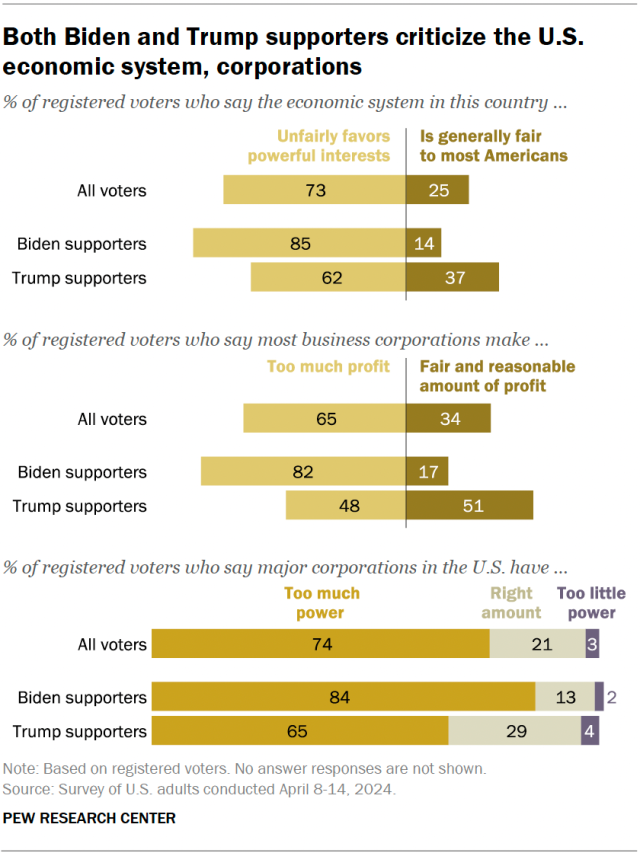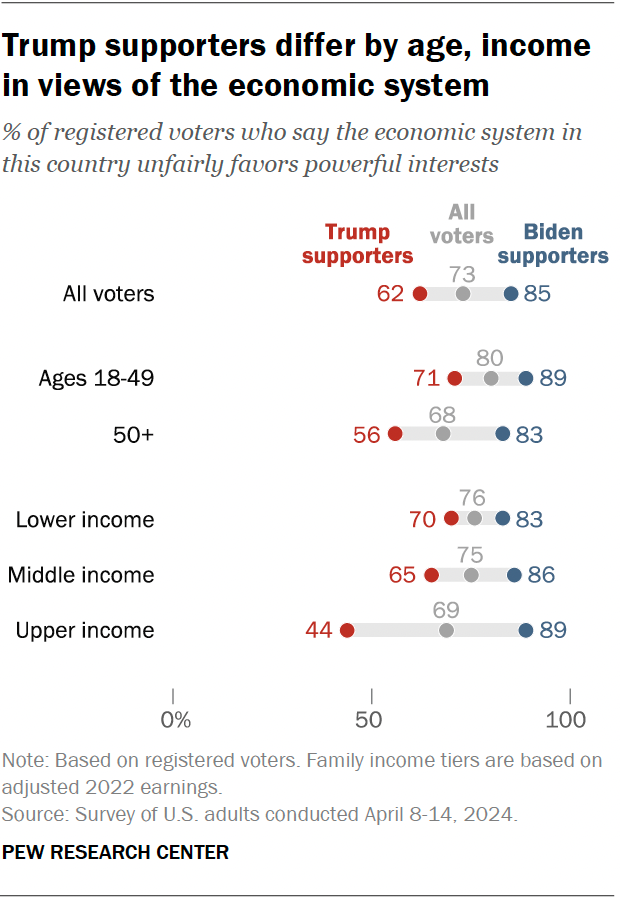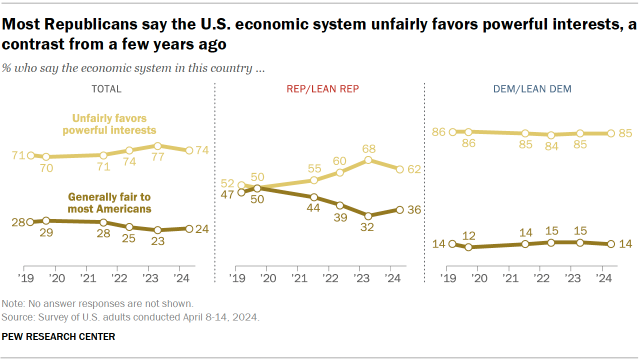Supporters of Joe Biden and Donald Trump differ on many political values, from views of immigration and gender identity to opinions about the government’s role and social safety net programs.
Pew Research Center conducted this study to understand voters’ views related to economic issues in the context of the 2024 election. For this analysis, we surveyed 8,709 adults, including 7,166 registered voters, from April 8 to April 14, 2024.
Everyone who took part in this survey is a member of the Center’s American Trends Panel (ATP), an online survey panel that is recruited through national, random sampling of residential addresses. This way nearly all U.S. adults have a chance of selection. The survey is weighted to be representative of the U.S. adult population by gender, race, ethnicity, partisan affiliation, education and other categories. Read more about the ATP’s methodology.
Here are the questions used for this analysis, along with responses, and the survey methodology.

But Trump and Biden supporters share a fair amount of common ground when it comes to criticisms of the U.S. economic system.
According to a Pew Research Center survey of 8,709 adults – including 7,166 registered voters – conducted April 8-14, 2024:
- 85% of registered voters who support Biden say that the economic system unfairly favors powerful interests, while just 14% say the system is generally fair to most Americans.
- 62% of registered voters who support Trump say the economic system unfairly favors powerful interests, while 37% say the system is generally fair.
- Overwhelming majorities of Biden supporters also say major corporations have too much power (84%) and most make too much profit (82%).
- About two-thirds of Trump supporters (65%) say corporations have too much power. They’re about evenly split in their evaluation of business profits: 48% say business corporations make too much profit, and 51% say their profits are fair.
Views about the economic system differ by age and income
There are substantial age and income differences among Trump supporters on whether the economic system unfairly favors powerful interests. These differences are more modest among Biden supporters.

Among Trump supporters
- 71% of Trump supporters ages 18 to 49 say the system unfairly favors powerful interests. A smaller majority (56%) of Trump supporters 50 and older say the same.
- Majorities of Trump supporters with lower (70%) and middle incomes (65%) also say the economic system unfairly favors powerful interests. Upper-income Trump supporters are more divided: 44% say the system unfairly favors powerful interests and 55% say the system is generally fair to most Americans.
Among Biden supporters
Biden supporters overwhelmingly say the economic system unfairly favors powerful interests. More than eight-in-ten across all age and income groups say this.
Little recent change in views of the economic system
Since 2019, clear majorities of Americans have said that the U.S. economic system unfairly favors powerful interests. But the share saying this today is slightly higher than it was from 2019 to 2021. About three-quarters of all U.S. adults (74%) now say the system unfairly favors powerful interests, compared with 71% in 2021.
Among Democrats and Democratic-leaning independents, views are essentially unchanged over this period, with 85% now saying the system unfairly favors powerful interests. However, Republicans and Republican leaners are now more likely to say the system unfairly favors powerful interests than they were a few years ago: 62% say this today, compared with 52% in 2019.

Note: Here are the questions used for this analysis, along with responses, and the survey methodology.
